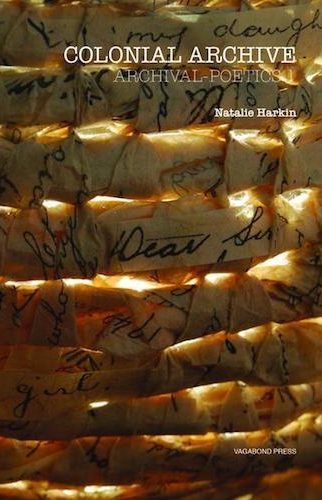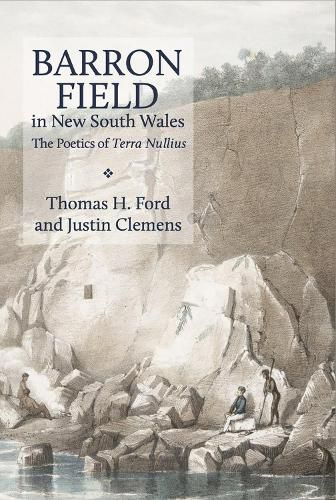There is no political power without control of the archive, if not memory
— Jacques Derrida, Archive Fever
archive fever paradox
my blood it pumps
where hearts
have
stopped
— Natalie Harkin, Archival-Poetics
Most people think of archives, especially big government archives, as either neutral sites of memory and history, or as mundane, boring storage facilities for administrative records, or they don’t think about them at all. But the poet Dr Natalie Harkin (Narungga) knows what many First Nations people know, that official archives are a powerful colonial weapon as well as a site of mourning. They are time capsules and they are also bullets. Created by state-sanctioned surveillance and violence, these archives have the power to sustain and reproduce that same violence. As Harkin says, there is ‘blood on the records’.
Archives are meant to hold the memory of Australia, but whose memory? The history these official archives preserve and tell is funded, collected, configured, curated, and often created by the colonial settler state. As such, they reflect the state’s values and ideology. This is the power that the archives wield: they can turn ideology into history, opinion into fact.
Archives are unreliable witnesses, especially here on these lands of invasion and occupation. As a collection of fragments of what actually happened, the archives of settler colonialism are full of misremembered histories, partial truths, and falsifications. They are also propaganda machines for the settler fantasy, selling a narrative of the state saving and civilising us First Nations people. This narrative vindicates invasion and protection-era policies and helps those who prosper now – on the back of land theft and dispossession – feel less guilty or even proud. The existence of this narrative and the misremembering it allows depends on the suppression of First Nations people’s experiences and the exclusion of First Nations voices from the archives.
This is not to say that we, First Nations people, are not in the archives but rather that it’s hard to hear our voices. We were usually included in archives without our informed consent. Our histories, our cultures, and our people were recorded by those commonly involved in the attempted physical, cultural, and spiritual genocide of our people: police officers, government officials, and anthropologists, for example. Our agency was dismissed as we became the subjects of their records while rarely allowed to be the creator of them. We, as Aileen Moreton-Robinson (Koenpul, Quandamooka) discusses, were the known but never the knowers. The people who surveilled us also distorted our voices when they wrote them down on paper, changing how we were heard and seen. Speaking of her experience working with First Nations records in the New South Wales State Archives, Kirsten Thorpe (Worimi) wrote:
As I navigated back and forwards between the archive and clients – between the written record and the personal stories of people – it became evident that the experiences and oral memories of people differed greatly from the ‘facts’ documented in the records.
This is also not to say there isn’t truth in the archives. Official records hold damning evidence of atrocities committed against our families by state agencies like the Aboriginal Protection Boards and the State Children’s Welfare Department. Archives also hold within their walls testimonies that speak to the resilience and strength of First Nations people, particularly First Nations women. However, they can be hidden behind the limestone walls, locked up in basements of boring, official looking buildings. That archives are housed out of sight, out of mind is part of their power. You cannot critique what you cannot see and you cannot see through limestone walls. This power is fortified by archivists who see themselves as gatekeepers and defenders of the archives enforcing colonial bureaucracies that impede access to the information in archives. To engage with archives, one is forced to jump through bureaucratic hoops to reach your ancestors stuck in the pages of these collections.
This is all powerfully explored by Harkin in her decolonial project, Archival-Poetics, which unfolds across three chapbooks: The Colonial Archive (1), The Haunting (2), and Blood Memory (3). Harkin’s work interrogates the archive and memory through poetry, imagery (a mixture of artworks and weavings (both by herself and other First Nations artists), legal documents, newspaper clippings, work-in-process shots, and so on). The work draws from both Harkin’s personal archive and the official (state) archives. The three chapbooks are themselves divided into numerous sub-sections, many of which are called memory lessons. Taken as whole, the work makes visible the trauma and gendered racism that lives in archives, particularly in the records stemming from the protection era where many First Nations children were forcibly removed from their families as a result of different government policies. The generations of children removed under these policies are now known as the Stolen Generations.
While Archival-Poetics is predominantly text-based, I would not call it a book/s. Like most First Nations knowledge, it does not fit easily into Western categories. To me it felt more like a dream or a deep yarn or a walk through an exhibition – possibly all at the same time. The work is a collection, an archive in its own right.
The Colonial Archive begins with a powerful statement. It’s one that should be read in all archival studies courses in colonised countries, a challenge to the way such courses present archives and the organisation of information as objective and neutral:
a small spotlight on the state, its institutions/ systems/ processes that generate and maintain particular fantasy-discourses and representations on histories, on people; that actively silence/suppress/exclude Indigenous voice and agency; stories and hearts that seethe and pulse from violent repositories to rupture fixed-imaginings, contribute counter-narratives and repatriate ‘something else’ transformative and just; new offerings through and beyond the colonial archive, to carry forward
for all my family
our Grandmothers past
Following this is the prelude, which is also a warning:
ATTENTION:
RECORD KEEPERS OF THE STATE
WE HAVE YOU UNDER SURVEILLANCE
WE HAVE YOU UNDER SURVEILLANCE
This warning, like all of Archival-Poetics, reveals how colonial surveillance is the foundation of many state archives; that is, these records are of the state controlling the movements and lives of First Nations people. Harkin subverts the surveillant gaze reflected in the archives by holding a mirror to it. This act warns archivists and record keepers of the state that actions that previously went unnoticed by many are now up for scrutiny.
Harkin has previously discussed how the level of surveillance in the archives affected her. In describing when she and her cousin received archival records about their Nanna’s life, she wrote: ‘the level of surveillance was overwhelming. Claustrophobic. We needed air and tea.’ We experience this as we read Archival Poetics: there’s a palpable sense of restriction stemming from the surveillance detailed in the archives. We experience this as Harkin recollects her feelings on discovering how the state watched her family, and how this production of records restricted their freedom.
I sit between almost 200 pages
file-note archives
a portion of Nanna’s life
under State control
throat tight
catch my breath sharp
hold it
The sense of oppressive claustrophobia extends past the surveillance evidenced in the records to the materiality of archives themselves. Reading the section titled ARCHIVE-BOX TRANSFORMATION I was filled with dread. I imagined drowning in paper and being unable to breathe when Harkin describes getting lost in the archives so much so that she becomes trapped or ‘locked up’ and ‘filed away’. While the ocean of paper is seeming endless and ever expanding, Harkin shows us that through it you can also hear your ancestors calling you. The ocean, like the blood in veins and the stories we tell, is moving and living.
Archival-Poetics did not only provoke dread in me, it also provoked rage. Harkin tells the story of how First Nations girls were forcefully removed from their families and put to work as indentured servants. Harkin draws attention to a system of slavery in Australia that is rarely spoken about in mainstream discourse. By doing so, she exposes the violence inflicted by the state on our families (my great-grandmother was also forced to be an indentured servant). Archival-Poetics reminds readers that The Handmaid’s Tale is not a dystopian future or an exercise in what could be. Rather, for First Nations people, it’s our grandparents and parents lives – an argument that Nayuka Gorrie (Kurnai/Gunai; Gunditjmara; Wiradjuri and Yorta Yorta) has also recently made.
Much of Archival-Poetics reminds me of the artwork the gulf by artist Judy Watson (Waanyi), whom Harkin draws from and quotes throughout the project. Watson’s work is a giant, nearly 6-foot high X on a wall made up of individual A4 paper copies of records from the Queensland State Archives that detail massacres of First Nations people. What surprised me about the gulf was that the records Watson used are open access and not restricted, meaning they are publicly accessible. The same is true of the stories that make up Archival-Poetics, which raises the question why this history not more well known among non-Indigenous Australians. Harkin makes her readers confront and engage with histories that many want to avoid. She will not let these stories be buried in the archives. Harkin, like many First Nations women before her, will not be silent.
One of the effective ways that Harkin exposes this violence is by providing excerpts from the colonial archives themselves. Excerpts such as this one written by Edward Lee Hamilton, the South Australian government appointed protectors of Aborigines, in the Adelaide Advertiser in 1903, exposes the intent of colonialism and the white supremacy you can find in the archives and the history of this country.
The mission stations are doing a good work, for if the natives under their influence were not taken care of they might wander about, getting into mischief, and put the country to great expense … The half-castes are more intelligent than the pure-bloods, but they cannot reasonably be expected to come up to the standard of whites.
Unfortunately, using the words of colonisers is sometimes necessary as First Nations voices are often denied and our oral histories are unjustly contested. Sometimes our message can only be heard by non-Indigenous people if it comes from the mouths of other non-Indigenous people. Sometimes to get the message through, you just need to hold a mirror up and let colonisers’ words indict them.
Another theme of Archival-Poetics is the state policing of Aboriginal identity and Aboriginality. Influenced by the racist ideas of racial hierarchies and eugenics that gained popularity in the Western world in the eighteenth century and continued into the twentieth century via disciplines such as anthropology, the settler state imposed on First Nations people who is authentic and who is not by using blood quantum metrics and terms like half-castes and quadroon. A First Nations person’s blood quantum was the basis of many laws and was part of well documented state-led policies and practices to ‘breed the black out’ of First Nations people, with the intention of ultimately assimilating us into mainstream white Australia and destroying our identity. This classification of First Nations people shares parallels with the archival practice which heavily involves the coding and sorting of information into categories and taxonomies. Just like the records in archives, First Nations people were/are named then sorted into categories, told where we fit. This is emphasised in the end of the passage titled MEMORY LESSON 3 | AFLOAT IN THE WAKE:
when they come
to claim me name me frame me
will they slice me half
or quarters
or one sixteenths
This control of Aboriginal identity is epitomised in the section titled UNDER THE ACT where Harkin provides a copy of an exemption certificate commonly referred to as a Dog Tag, a piece of paper that the government would issue that would declare that the First Nations person who receives it ceases to be Aboriginal and, as such, is now exempt from the Aborigines Protection Act. In the eyes of the law, with a Dog Tag you become a citizen of the ‘ordinary white community’ which would mean it was illegal for you to socialise with Aboriginal people, dooming First Nations people issued with a Dog Tag to isolation from their family members still considered Aboriginal by the state.
We are not half anything but a whole person. Our humanity should come from our existence not our proximity to whiteness. But as evidenced in the archives and the excerpts Harkin provides, that state often denied our right to be a person unless we were white enough. The state denied our humanity, referring to us as as ‘Objects of His Excellency’s Kindness’. We were even denied our names as many state officials in records refer to us, as Harkin notes, as ‘the girl’ or ‘the Aborigine’.
All of this is dehumanising, which is something Harkin actively resists throughout Archival Poetics as she makes ‘visible the humanity of those trapped and lost’ in the machinery of the setter state. Harkin fights to ensure First Nations people are not reduced to archival paper. One of the things I love most about this project is that it is full of humanity: full of love for family, First Nations community, and the Aunties and Uncles before us. Consider this passage titled A DOMESTIC’S WALTZ:
I was dishes
you lean in
start a gentle rock
to and fro
side by side
deep in suds we hum
a slow
mournful
perfect
harmony
in dreams I go back to my home
you waltz
on setting suns
your hips groove glow
I glide
don’t miss a beat
only you
Archival-Poetics is doing something very powerful: it is exercising the right of reply, the right to defend oneself against the record, a right not previously afforded to First Nations people. The right of reply is something many archivists interested in social justice and balancing the history contained within archives have been arguing for. They argue that marginalised voices should have a platform to respond to the records created about them and contribute to the histories constructed from archives. This may help set the record straight. The right of reply is an opportunity to challenge the validity of the history held in Western institutions like archives.
Harkin’s Archival-Poetics is an exercise in the right of reply. In doing so, it names the power of archives, so this power cannot remain invisible but rather, can be challenged and critiqued. Archival Poetics speaks back to this power and dismantles it. In turn, it asserts the power that we First Nations people hold and have always held – a power that exists outside of colonial systems.
Archival-Poetics is also a strong reminder that history doesn’t only exist in archives or in pages of paper, but exists in the oral histories that are passed down, it exists in the landscapes we traverse and it exists in our blood. Our grandmothers are archives, libraries, and museums; our grandmothers are historians. Consider this passage titled HER MEMORY REMEMBER:
blood-lessons remember / colonial-archive remember /
oral-history remember / uncanny-haunts remember /
ocean-tides remember / shed-skin remember / new-
imaginings remember / my grandmother remembering /
her memory I remember
Similarly, all through this project there are images of documents woven with Aboriginal weaving techniques which is interesting because I believe weaving is a memory device. Through weaving we are speaking to our ancestors and enacting history. Memories are codified and stored in what our hands have woven. When we weave, we talk history, what we weave is an archive but not in the colonial sense.
After reading Archival-Poetics, I wanted to thank Harkin for her generosity: you can tell how much research went into this project and emotional toll that it took on her. The archive can affect people, it can cause trauma, longing, sadness, rage, and joy – all of which can be felt while experiencing Archival-Poetics. The work is not purely a theoretical exercise, it is a personal one, and this makes it even more engaging. Many non-Indigenous historians who tell the ‘truth’ about this country’s history do so from detached perspective which I believe is not more objective but rather is exploitative and always feels false. Archival Poetics is Harkin’s truth and it is a truth many First Nations people share. We are lucky she has been so generous to share this truth with us.
Archival-Poetics stays with you. Like the many ghosts of the records, these words attach themselves to you and follow you. Harkin uses the term archival-poetic journey and that’s what reading Archival Poetics is – a journey. Be prepared for truth or in Harkin’s words:
Warning | some blood-memory lessons should begin with a slow and deep inhale knowing in that moment before exhale where this archival-poetic journey might never end the next breath may clot, won’t feel so easy.
Works Cited
Nayuka Gorrie, ‘The Handmaid’s Tale Is Not Dystopian For Black Women – It’s Real Life’, SBS (2018).
Natalie Harkin, ‘The Poetics Of (Re)Mapping Archives: Memory In The Blood’, Journal Of The Association For The Study Of Australian Literature, vol. 14, no. 3 (2014).
Aileen Moreton-Robinson, ‘Whiteness epistemology and Indigenous representation’, in Whitening Race: Essays in social and cultural criticism, edited by Aileen Moreton-Robinson (Aboriginal Studies Press, 2004).
Kirsten Thorpe, ‘Indigenous Records: Connecting, Critiquing And Diversifying Collections’, Recordkeeping Roundtable (2014)







